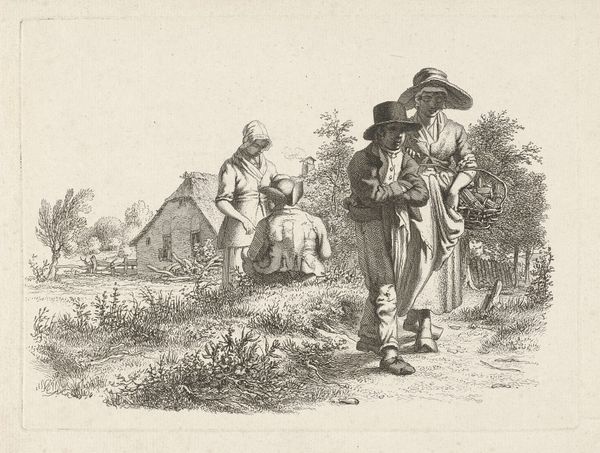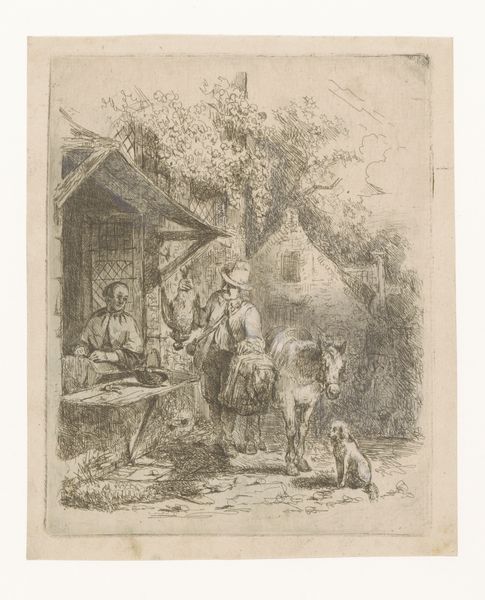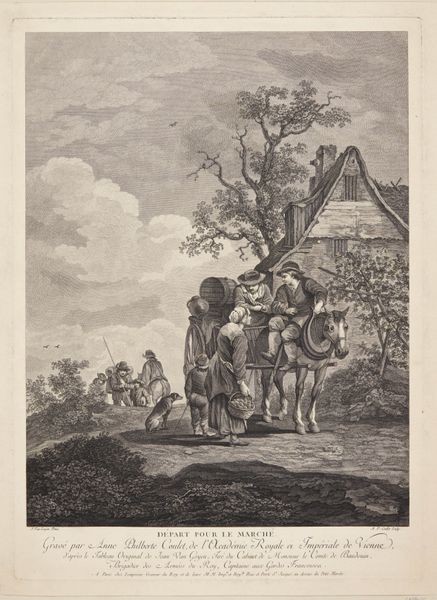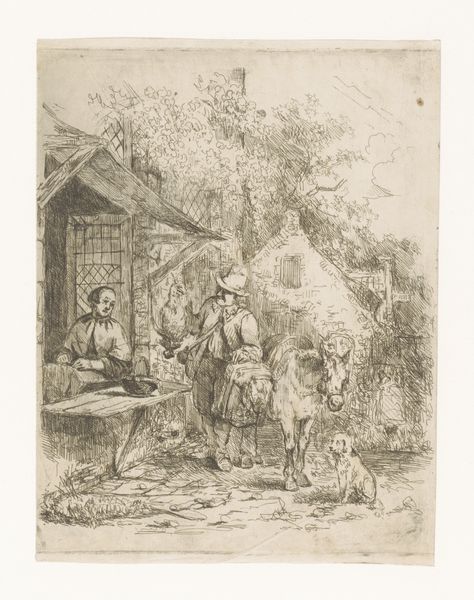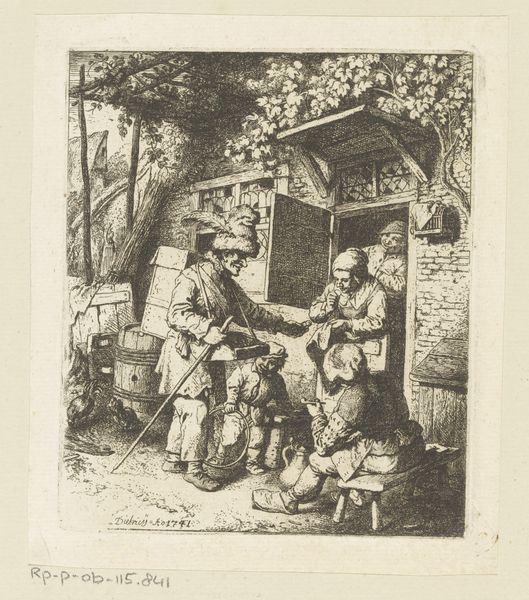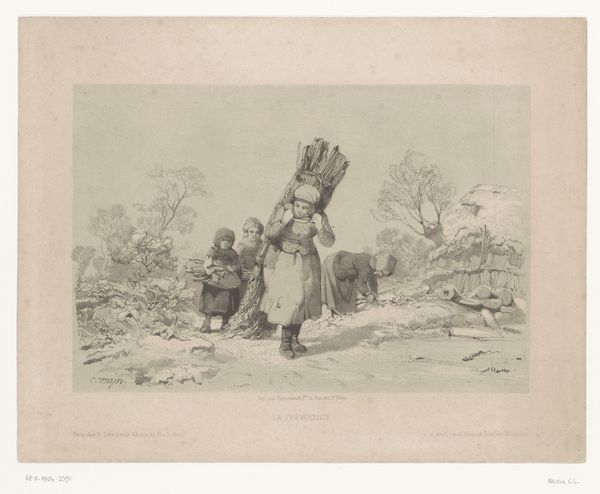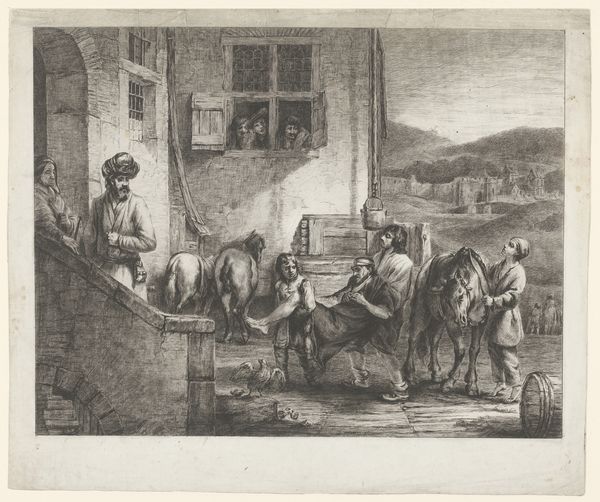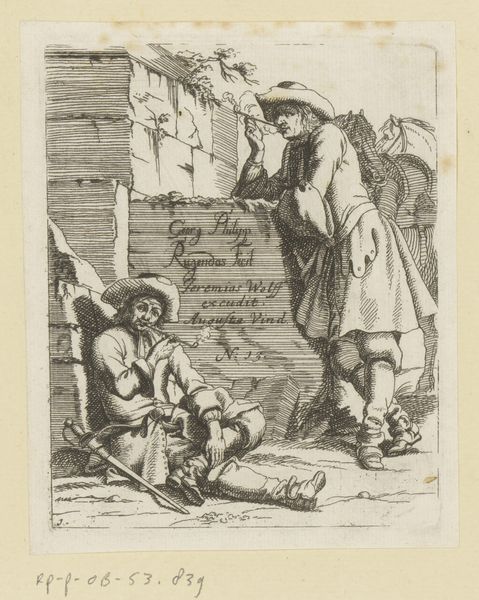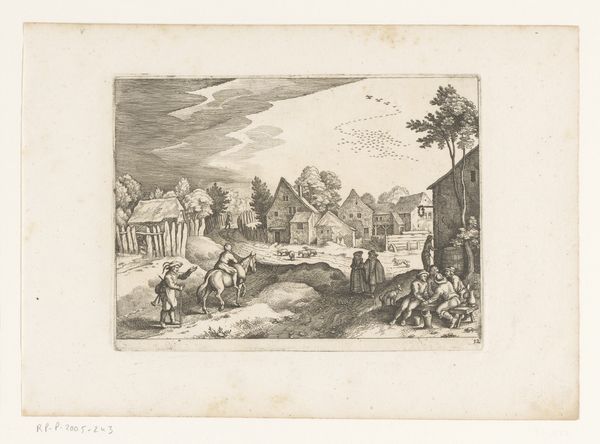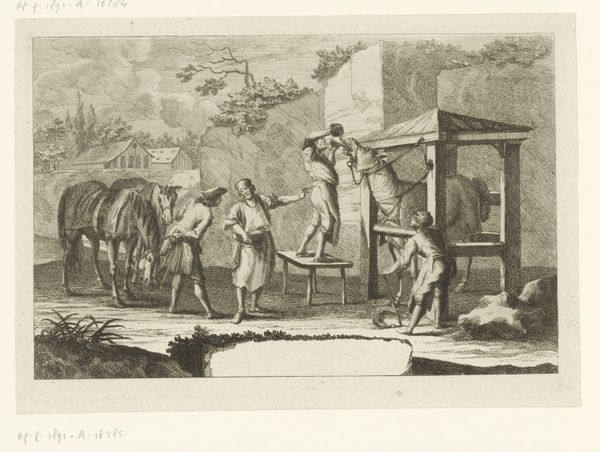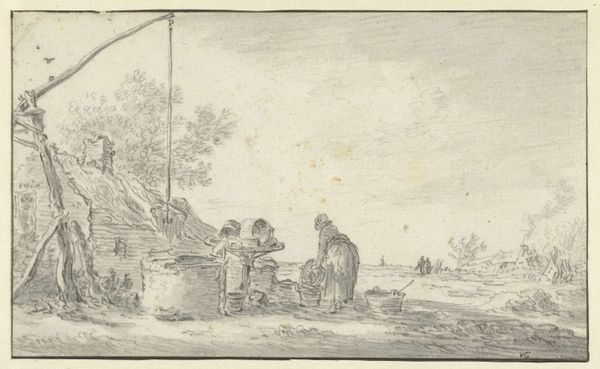
print, etching, engraving
#
dutch-golden-age
# print
#
etching
#
landscape
#
figuration
#
genre-painting
#
engraving
#
realism
Dimensions: height 210 mm, width 266 mm
Copyright: Rijks Museum: Open Domain
Curator: Oh, I'm drawn in by this miniature world! I find the composition so evocative; it makes me feel like I’m eavesdropping on a little village scene. Editor: This etching and engraving from 1678, titled "Boeren bij een waterput," or "Farmers at a Well," by Andreas Scheits, provides us with a window into Dutch Golden Age genre painting. It captures a moment of everyday life. Curator: A perfectly frozen ordinary moment, wouldn’t you agree? Look at the way he’s etched the light on the woman's dress! And there's a man sprawling languidly by her. Is he dozing, I wonder? Editor: Note the emphasis on labor and rest, crucial elements in understanding Dutch society at that time. Consider how social classes were represented. Is there tension or harmony, or even something that lies in between these extremes, shown between the reclining male figure and the female figure carrying something that appears to be made of Delftware? Curator: Ah, you bring up such fascinating aspects! Personally, my eye is pulled towards the water well itself – an oasis for chatter and communal work, almost an informal parliament! Editor: That focus brings a perspective. It would also be valid to wonder, though, how gender and access play out here. The well, although necessary, may also have been a heavily-laden symbol in this world. And is access to it the same for all social strata here? Curator: I find this etching almost humorous. I imagine it’s how one of these figures described life to Scheits and he had to immortalize it with a lighthearted approach! It's almost like he wants us to listen in. Editor: Art historians, like us, can act as intermediaries, amplifying voices of those frequently disregarded or unheard, or as interrogators of the way the image has been received and its position in Dutch society. We should constantly rethink what is present, and, sometimes more significantly, what isn’t present or actively muted here. Curator: It definitely is an open portal into this little Dutch story. For me, Scheits' captured the feeling of a warm spring day filled with daily rural rhythms. Editor: Ultimately, Scheits’ etching compels us to reflect not only on 17th-century Dutch life, but on our own biases as viewers looking back through the corridors of time.
Comments
No comments
Be the first to comment and join the conversation on the ultimate creative platform.
